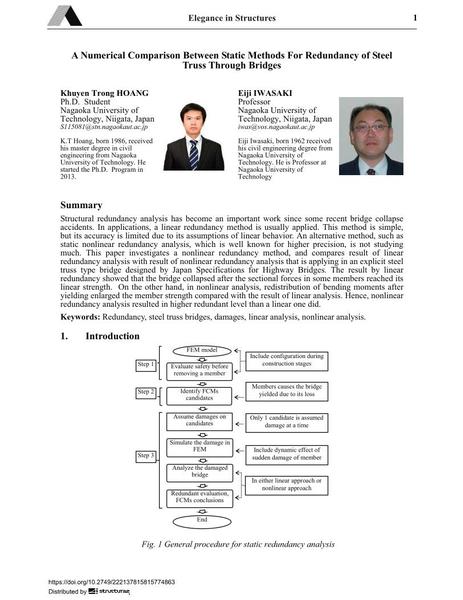A Numerical Comparison Between Static Methods For Redundancy of Steel Truss Through Bridges

|
|
|||||||||||
Détails bibliographiques
| Auteur(s): |
Khuyen Trong Hoang
Eiji Iwasaki |
||||
|---|---|---|---|---|---|
| Médium: | papier de conférence | ||||
| Langue(s): | anglais | ||||
| Conférence: | IABSE Conference: Elegance in structures, Nara, Japan, 13-15 May 2015 | ||||
| Publié dans: | IABSE Conference Nara 2015 | ||||
|
|||||
| Page(s): | 256-257 | ||||
| Nombre total de pages (du PDF): | 8 | ||||
| Année: | 2015 | ||||
| DOI: | 10.2749/222137815815774863 | ||||
| Abstrait: |
Structural redundancy analysis has become an important work since some recent bridge collapse accidents. In applications, a linear redundancy method is usually applied. This method is simple, but its accuracy is limited due to its assumptions of linear behavior. An alternative method, such as static nonlinear redundancy analysis, which is well known for higher precision, is not studying much. This paper investigates a nonlinear redundancy method, and compares result of linear redundancy analysis with result of nonlinear redundancy analysis that is applying in an explicit steel truss type bridge designed by Japan Specifications for Highway Bridges. The result by linear redundancy showed that the bridge collapsed after the sectional forces in some members reached its linear strength. On the other hand, in nonlinear analysis, redistribution of bending moments after yielding enlarged the member strength compared with the result of linear analysis. Hence, nonlinear redundancy analysis resulted in higher redundant level than a linear one did. |
||||
